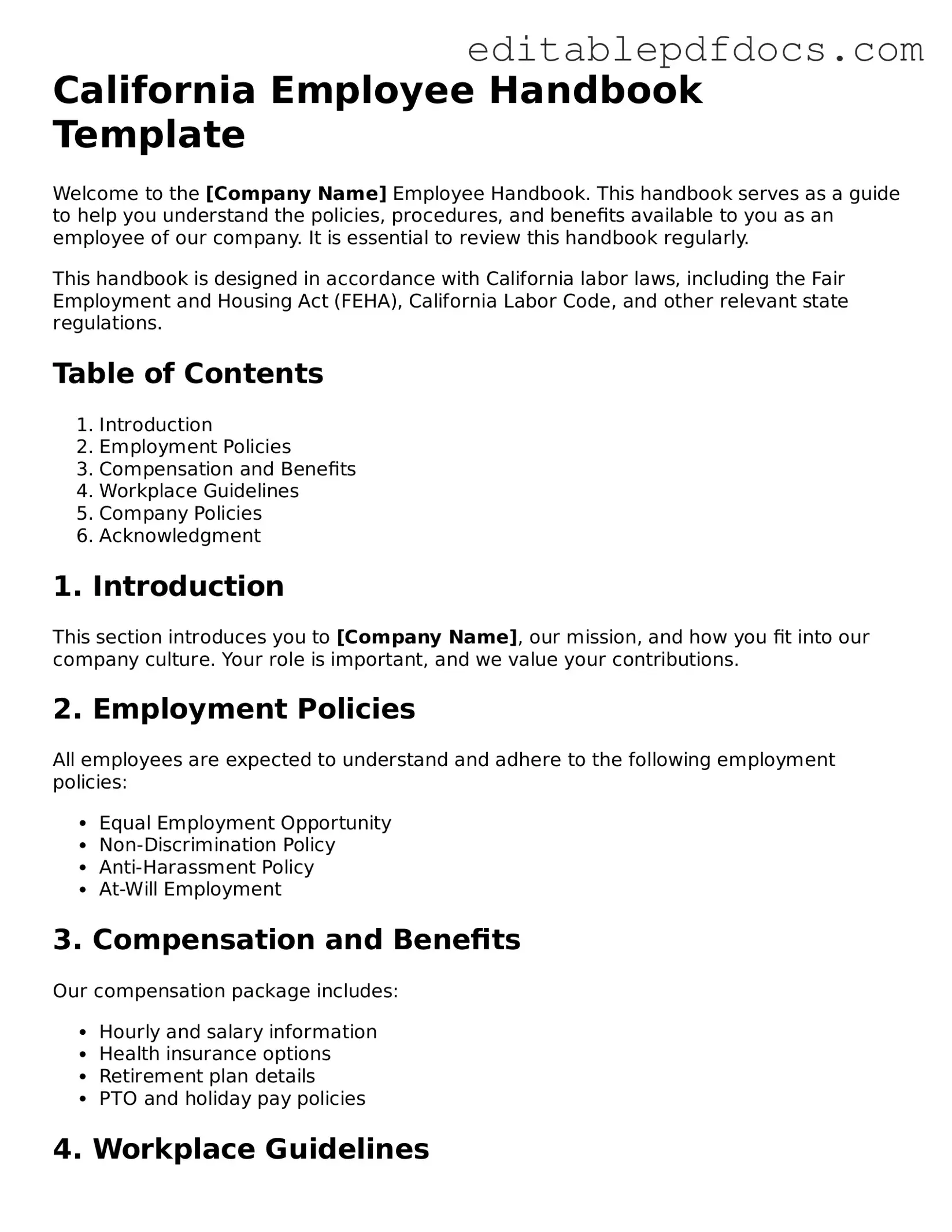Creating a California Employee Handbook is an essential step for any business operating in the Golden State. This handbook serves as a vital resource, outlining the rights and responsibilities of both employees and employers. It sets the tone for workplace culture and helps ensure compliance with state and federal laws. Key aspects of the handbook include important policies on anti-discrimination, harassment, and workplace safety, which protect employees and foster a respectful environment. Additionally, it covers guidelines for attendance, dress code, and performance evaluations, providing clarity on expectations. Benefits and compensation details are also crucial components, as they inform employees about their rights regarding pay, leave, and health benefits. By providing clear and accessible information, a well-structured employee handbook can enhance communication within the workplace and reduce the likelihood of misunderstandings or disputes.
